UHD-HDR OVER 5G: THE FUTURE ALREADY PROVEN TODAY
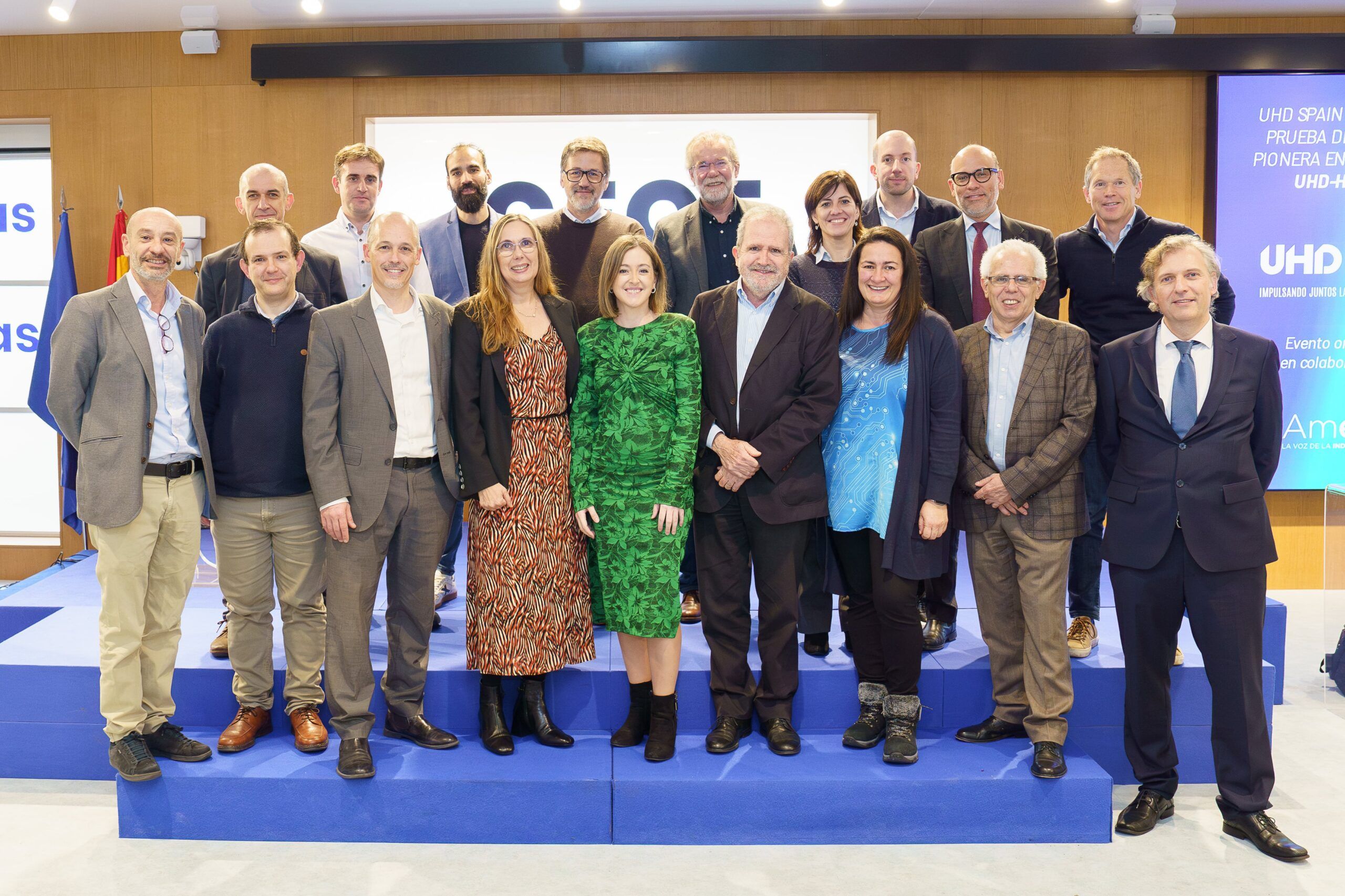
- Miguel Ángel Cristóbal (SAPEC): “It has been one of the first experiences in the world to mix UHD and 5G technology in an end-to-end workflow”.
- Carmen Pérez (RTVE): “We have moved on the edge of technology, on the edge of the precipice”.
- Xavier Redón (Cellnex): “A year ago this was unthinkable. Yes, it can be done. Now we do not say it because we believe it, but because we know it”.
UHD Spain, the association that promotes Ultra High Definition in Spain, has organized in collaboration with AMETIC a briefing, at the headquarters of the Spanish Confederation of Business Organizations (CEOE) in Madrid, on the pioneering test of UHD-HDR broadcasting and next-generation audio (NGA), using 5G technology at different points of the chain, carried out last October. A milestone that opens the way to the future of these technologies and culminates the work of a whole year in which the association has been committed to 5G technology.
The test aimed to assemble a UHD workflow with HDR-HLG from the camera to the user’s device, using various broadcast media and technologies such as 5G, edge and cloud processing, and all available broadcast media: DTT (DVB-T2), satellite (DVB-S2), Internet (OTT, HbbTV) and the new 5G Broadcast system, with simultaneous Dolby Atmos sound.
To develop the test, a live broadcast of a concert by singer Israel Fernández held at the Real Observatorio Astronómico de Madrid with the collaboration of Radio 3 was chosen, which could be viewed on TVs, PCs, tablets or mobile devices through the official website of UHD Spain and other broadcasting systems.
The general manager of SAPEC, Miguel Ángel Cristóbal, one of the promoters of this novel idea, has been in charge of presenting a meeting that has served to explain the challenge that UHD Spain sets every year: “This time we wanted to see the possibility of combining the acronyms UHD and 5G because we wanted to see how far we could go to make an end-to-end workflow“. This test has been “one of the first experiences in the world that has mixed all these technologies, from the camera to the television or any support in which to display it,” said the general manager of SAPEC.
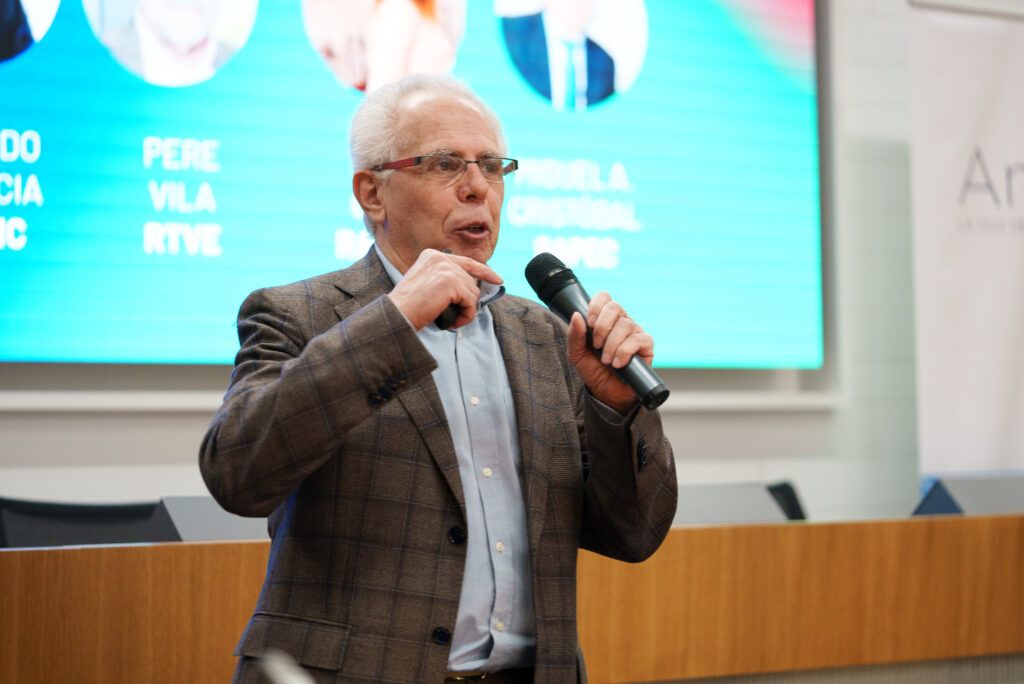
Pere Vila, president of UHD Spain, and Eduardo Valencia, director of Electronic Industry of AMETIC, together with Alex Gara, from Radio 3, have been in charge of welcoming to a meeting in which they have highlighted the “learning” that has meant this test in which “more than 20 different companies have collaborated” and that has allowed, in the words of Vila, “to achieve the goal of networking and learning together”. “Thanks to the collaboration of UHD Spain we were able to enjoy a milestone in broadcasting. For us it is incredible to unite talent with the evolution of technology that allows us to reach our audience in a unique way and with the highest quality,” said Alex Gara, from Radio 3.
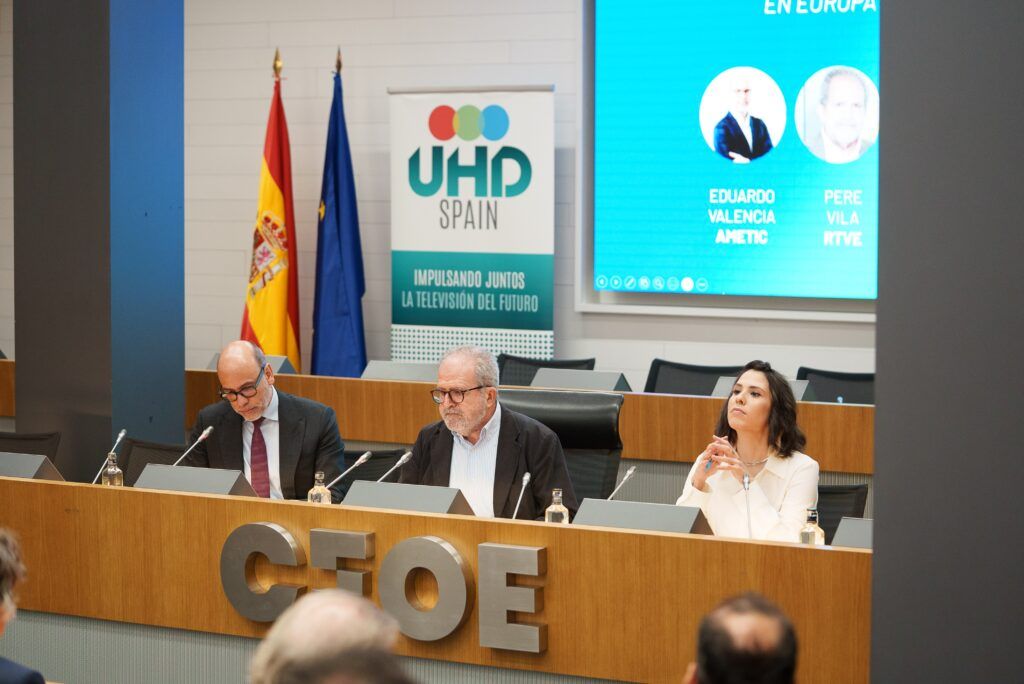
Moving to the edge of technology
The three round tables in which the day has been divided have served to know in detail the most technical aspects of the test, from the capture to the 5G Broadcast broadcast, through the capture, production in the cloud, contribution, and postproduction, without leaving behind another important aspect such as user monitoring. A major challenge for all the people and companies that have been altruistically involved in this milestone in which they have “moved on the edge of technology, on the edge of the precipice”, as recognized by Carmen Perez, from RTVE, who moderated the first of the tables ‘Capture, remote/cloud production of UHD-HDR’.
“This has sometimes led us to give up something or modify the flow,” said Perez in a test that “for Canon was very interesting to have the opportunity to work in broadcasting with film cameras,” acknowledged Carlos Castan, from Canon, whose function was to “ensure sufficient image quality so that when the funnel was narrowed, the maximum possible image quality would arrive”. “I think we are not far away. There are cameras on the market that will give us the possibility of working in this way on a regular basis,” he said.
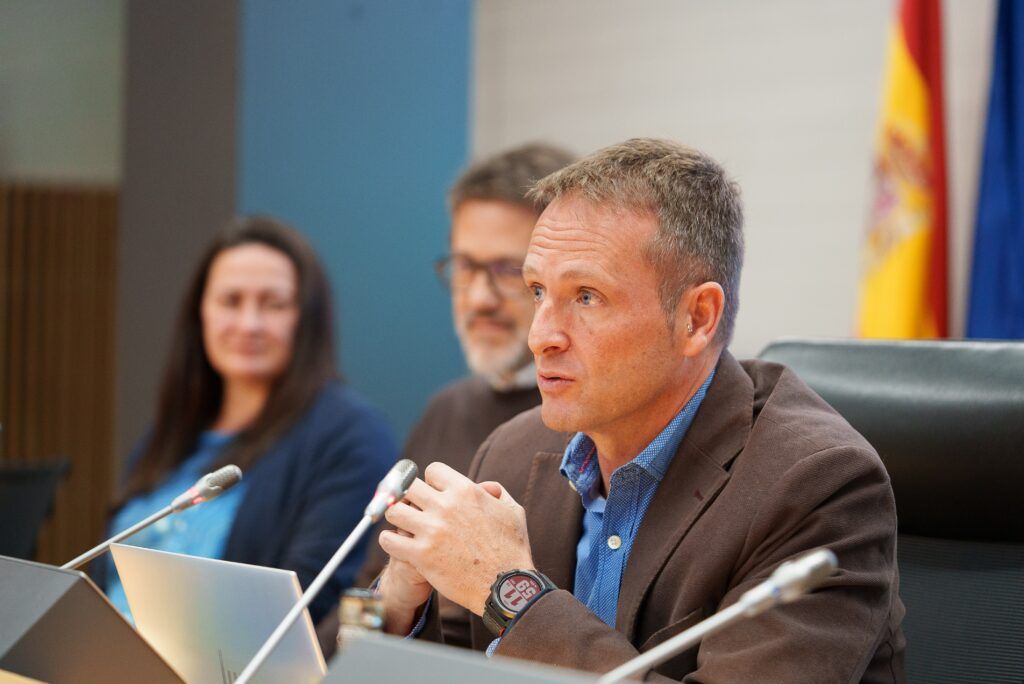
An experience to which they were not accustomed in Grup Mediapro, “used to working with a smaller flow of companies”. This is how Emili Planas described the pilot test as “an abnormal production”, but “fully satisfactory” in the technical operation and after his contribution in the previous adjustments and the operation on the day of production.
Production in which the director Jorge Alonso, from RTVE, was in charge, who has recognized that “he could not reject a challenge like this that will mark the future” of the broadcasts. An extraordinary challenge in which a multitude of companies were involved and in which “the system was pushed to its limits”. “We walked a long way over the precipice, but as a proof of concept, setbacks – such as the rain – cannot be prevented and in the end everything was solved,” Alonso recalled.
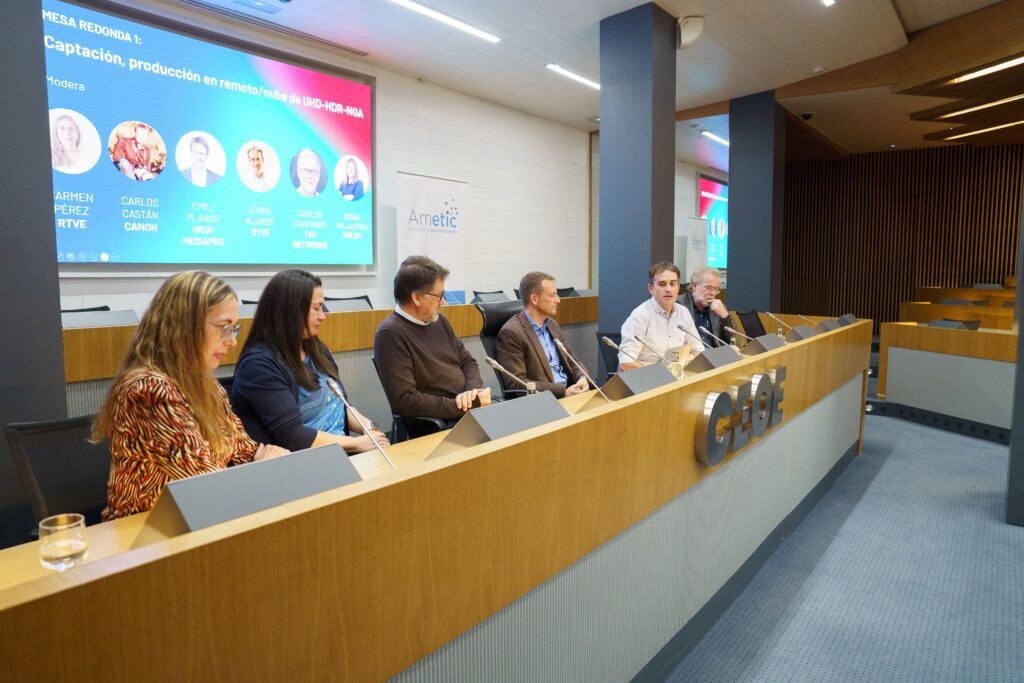
For his part, Carlos Chaparro, from TVU Networks, highlighted the contribution and input of all those involved in this project, as well as the challenge posed for the material that his company provided, “the production system in the cloud”, because “4K consumes infinite resources”. Even so, Chaparro has assured that “cloud production is already there. It is not the future, it is the present. It allows us to reduce costs, although we have to learn key aspects. We have it here and we have demonstrated it.
Sonia Valladares, from Dolby, defended the importance of audio in this type of broadcasting: “We must understand audio as another feature for an optimal service in UHD, although it is always somewhat left behind,” she said in her speech in which she claimed that audio should be given “more space to bring it natively to the user.
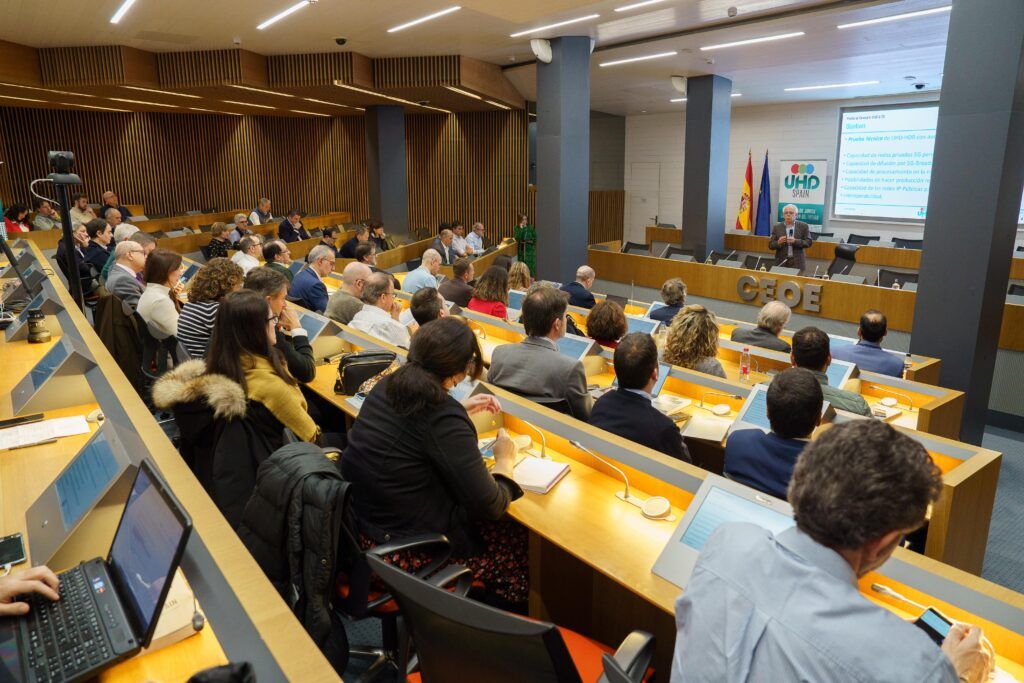
In the cloud, everything faster and more agile
Despite the enormous difficulties presented in this test, one of the main conclusions is that “the industry has shown that it is possible to do it and the whole chain in 4K and 5G is working”. This was acknowledged by Juan José Anaya, from SAPEC, during his intervention in the second round table, ‘The vision of private 5G contribution, FTTH and broadcasting’, moderated by Jorge Rodríguez, from Hispasat.
“This means that the industry is ready to work with the latest encoding and transmission technology,” said Anaya. A position reinforced by Fernando Pinto, of TVU Networks: “It’s a solution that is working and that works,” acknowledged Pinto, who highlighted “the absolute synchronization of its backpacks that allows production without any problems”.
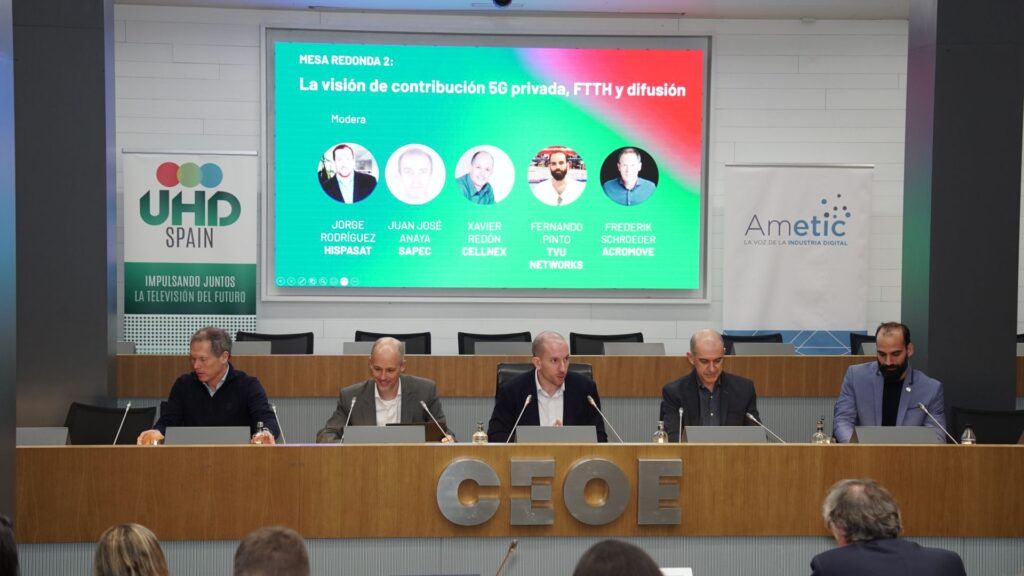
Frederick Schroeder, from Acromove, highlighted the “possibility of using all types of cameras” for this type of broadcast, while demonstrating that “in 30 minutes you can transmit from the cloud in a fast and agile way” thanks to the 5G private network solution proposed by Acromove. In addition, “working wirelessly gives you greater freedom of movement”, something to be taken into account.
Like other colleagues in this ambitious adventure, Xavi Redón, from Cellnex, acknowledged that something that “seemed impossible” a year earlier had become a reality, but that “once it has been done, it is easier than it seems”. “Yes, it can be done. Now we are not saying it because we believe it, but because we know it”. Of course, he clarified that “whatever you do, you have to try it before. But not more or less, but absolutely everything, down to the smallest detail”.
The user as a priority target
As a last but not least vital part of this pilot test, the signal reception and the user were the main protagonists of this challenge. Antennas, equipment and receivers that had to be adapted to combine 5G and Broadcast to obtain an optimal signal for the user. The company Gsertel, represented at the third table, ‘The 5G Broadcast Broadcast. Monitoring’, by Gabriel Loyácono, was a fundamental part in this point of the project in which difficulties also arose such as the “need to include 5G-Broadcast technology”. “We encountered difficulties in monitoring with the location and pointing of the terrestrial and satellite antenna,” recalled Loyácono, among the many anecdotes and experiences left by this work.
No less difficult was the work of Cellnex, also represented at the session by Milagros Díaz. This company was in charge of “coordination and frequency management with the Ministry“. Not a trivial matter, since “it is not easy to find free spectrum in a saturated spectrum”.
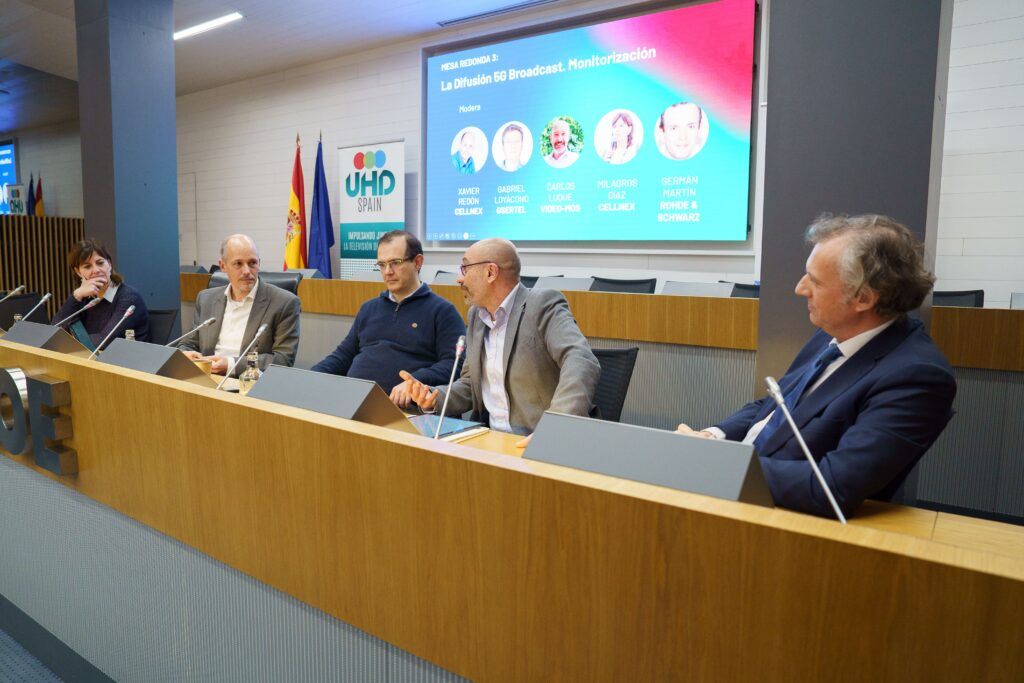
For his part, Germán Martín, from Rohde & Schwarz, explained the coordination for the “inclusion of a prototype receiver”, while “the reception of this signal was made possible”. Martin has taken the opportunity to advance that “in 2025 or 2026 the first terminals that allow receiving with 5G-Broadcast technology are expected”, while “in France a stable 5G Broadcast network is already being prepared”.
Meanwhile, Carlos Luque, from Video-Mos, presented the “analysis of the quality of user experience”, that is, the “monitoring of the user experience” with the aim of “knowing the problems that have been detected”, also providing “a series of reports that allow us to know the points to improve“.
In short, a teamwork with which it has been found that “this workflow is feasible for UHD-HDR with NGA”, in which the “use of private 5G networks are a real solution” and in which “the efficiency and reliability of public IP networks and protocols for transporting video over public networks has been demonstrated”. However, there are still aspects to be improved, since “the process in the ‘cloud’ must be optimized and improved for UHD-HDR”.
Making Of Video
A key role in the development of this retransmission has been played by the member companies of the association led by SAPEC, which has acted as coordinator and project manager and specialist in video encoding and transport. In addition, RTVE, Cellnex, Grup Mediapro, Canon and TVU Networks have actively participated in all phases. UHD Spain members Ateme, CCMA, Dolby, Gsertel, Fraunhofer IIS, Rohde & Schwarz, Televés, Vestel, Video-MOS, among others, have also collaborated. The broadcast was made possible thanks to the networks of Axion, Cellnex, Hispasat and Telecom CLM. Other companies such as Acromove, Qualcomm, Spinner and Transparent Edge have also collaborated in this test.
The test has also been made possible thanks to the support of the Secretary of State for Telecommunications of the Ministry of Economic Affairs and Digital Transformation, who has approved the use of the spectrum for the test.
Sessions are available at YOUR UHD ZONE (Free Registration)